Bikaner is an underrated city of Rajasthan. Customarily tourists prefer Bikaner for a layover of a few hours afore boarding to train towards Delhi or any other place of Northern India and buy the delectable Bikaneri-Bhujia. But the city has a lot to offer the tourists. The city houses majestic Havelis, Forts, deserts and some uniqueness. Unlike other major cities Bikaner does not possess a flaunt vibe to the tourists, instead, the city has something orthodox to offer.
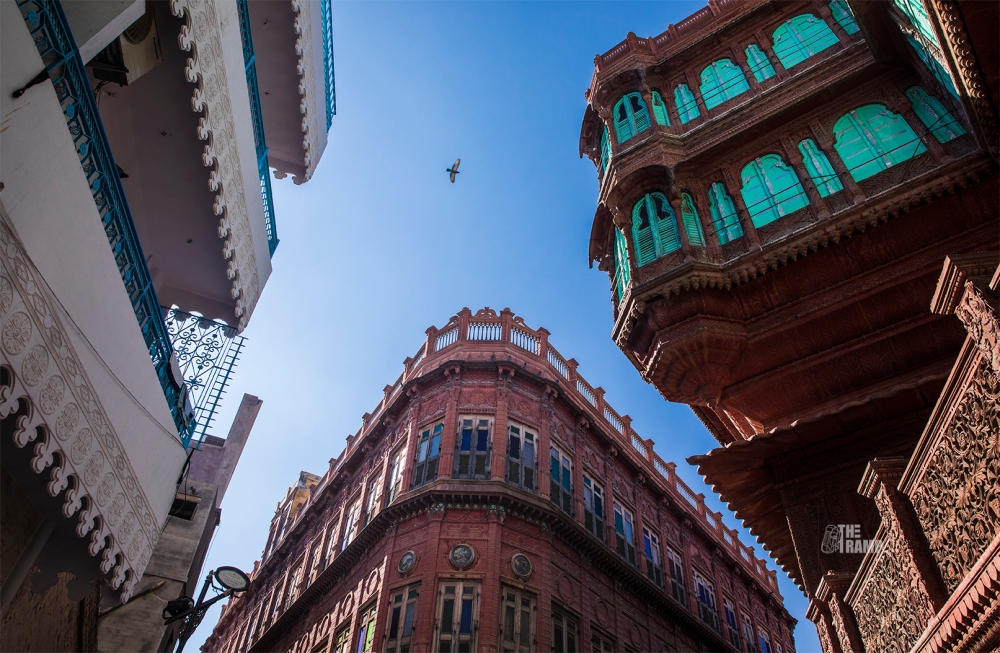
Bikaner was my final destination of the Rajasthan tour in the winter 2022. I travelled to Bikaner by a night train from Jaisalmer. I disembarked the train in the early morning. I got a different vibe in Bikaner. In Jodhpur and Jaisalmer, the drivers of car and auto rickshaw virtually jumped on all the tourists and endeavoured convincingly to hire them. But in Bikaner, I did not find that desperation among the drivers. However, I booked an auto rickshaw at a plausible price (much less than that of Jodhpur and Jaisalmer) and reached Hotel Dhola Maru, owned by the tourism department of the state. Though the check in time was after 1PM but fortuitously I was sanctioned for early check-in.

Here, I would relish to verbalise marginally the royal history of the desert town. Etymologically Bikaner denotes the city of Bika. Prior to the mid 15th century, the region that is now Bikaner was a barren wilderness called Jangladesh. Rao Bika, the first son of Maharaja Rao Jodha (progenitor of Jodhpur), surmounted the northern part of Rajputana. In lieu of inheriting Jodhpur from his father, Rao Bika wanted to have his own Kingdom. He built his own fort and denominated the city Bikaner. Anon the city was getting relished by the traders and became a traders’ hub. Though it was in the Thar Desert, Bikaner was considered an oasis on the trade route between Central Asia and the Gujarat coast as it had adequate spring dihydrogen monoxide. The older fort no longer subsists but a hundred years later an incipient fort was built about 1.5 km from the city centre, kenned as the Junagarh Fort by Rao Bika’s descendent Rai Singhji. During the Mughal Imperium’s rule in the country, Raja Rai Singh accepted the suzerainty of the Mughals and held a high rank as an army general at the court of the Emperor Akbar and his son the Emperor Jahangir.
After having a sumptuous breakfast, I commenced my exploration. I booked a Rapido and reached Junagarh Fort. The queue was not long. I purchased a ticket and get into the fort.
Junagarh Fort:
Formerly known as Chintamani Fort, this brobdingnagian structure was the residence of the Royal Family. Unlike other forts, it is not built atop a hill. Junagarh fort possesses a mixed architecture. From Bikaner’s signature red sandstone walls to marble facades in Mughal design – each courtyard had something incipient to visually perceive.
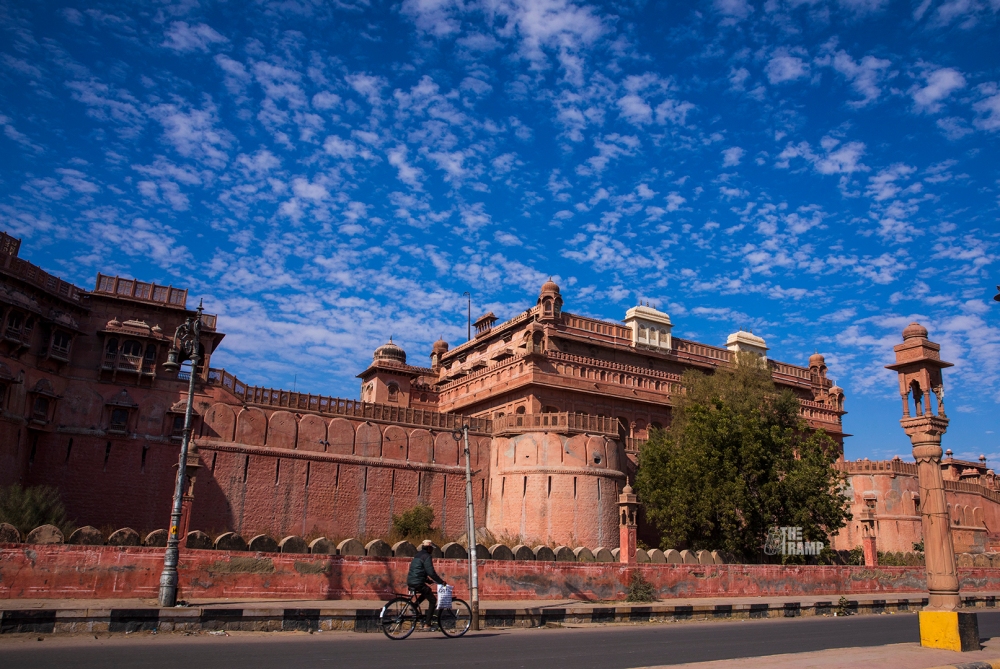

There are different mahals (palaces) inside the fort. Personally I relished the Badal Mahal and Chandra Mahal.
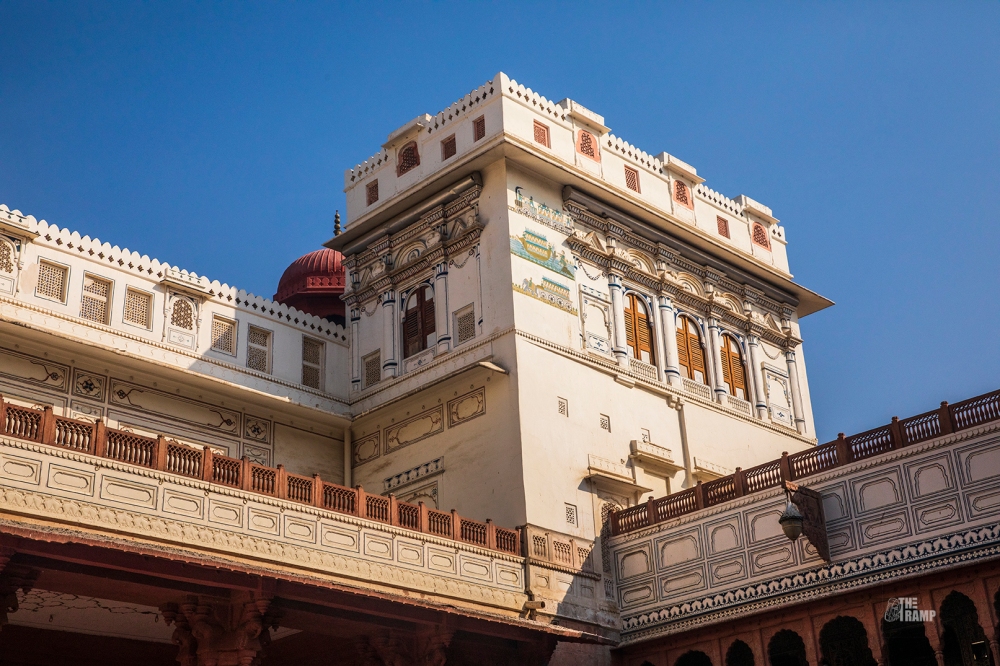
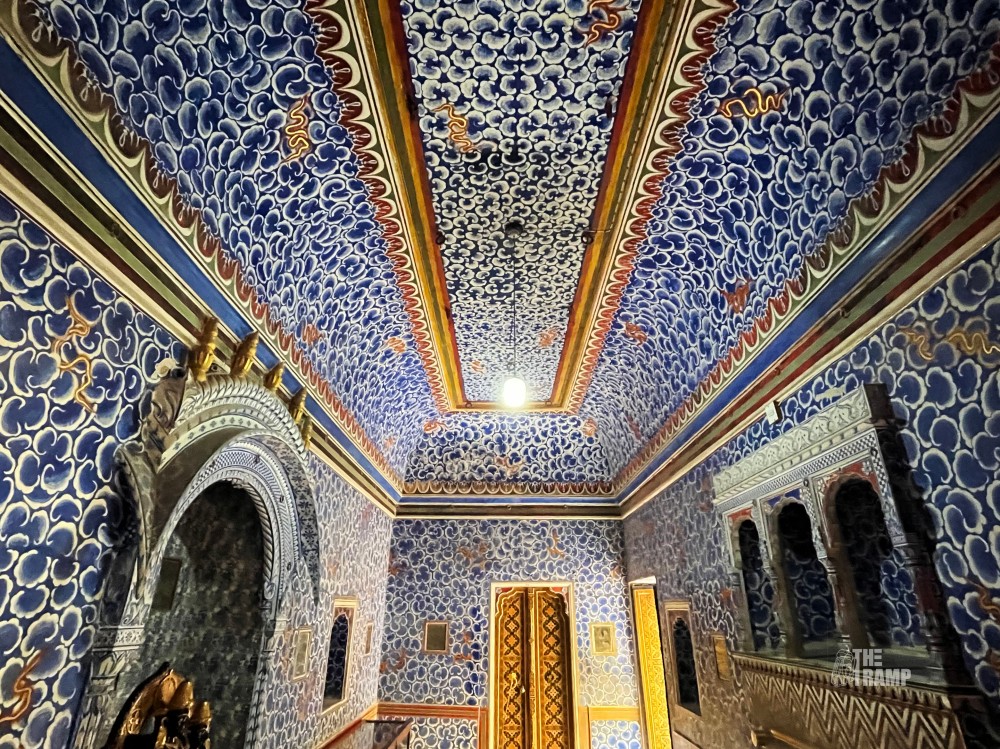
I climbed up to the top of the fort and got some breathtaking views.
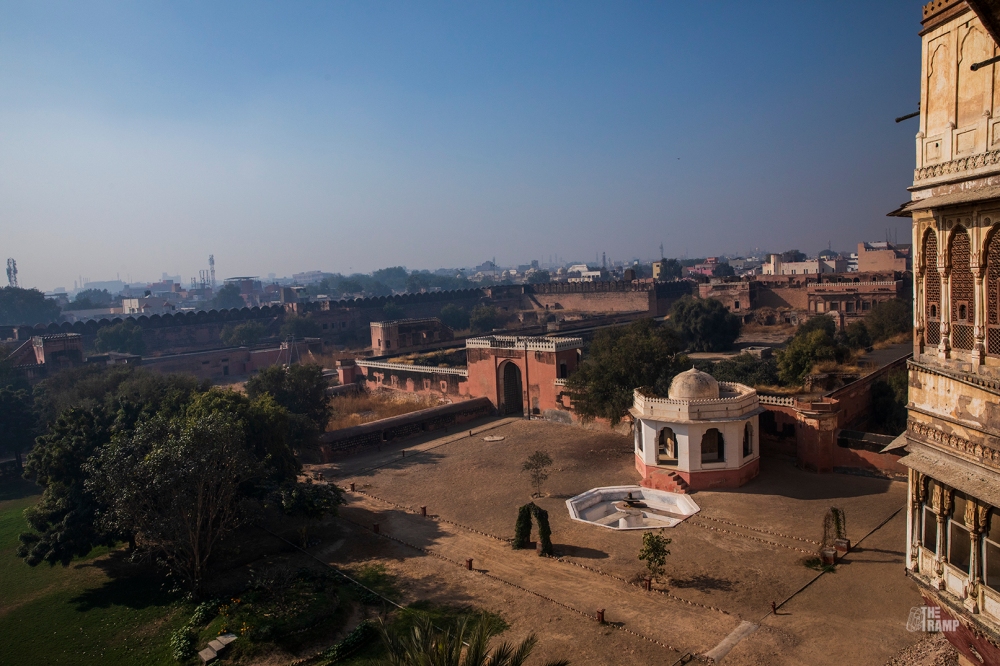
Old Town and Havelis:
Regarded as the most iconic landmark in Bikaner, Rampuria Haveli is a cluster of seven ornate mansions (havelis) located in Joshiwara street, an aristocratic neighbourhood of the old city. These havelis were built in the 15th century by an opulent merchant family of Bikaner called Rampuria. The havelis are made with the signature red sandstone of Bikaner called Dulmera. I doted the Havelis so much that I visited there multiple times. From the intricate carvings on the wall, to the different coloured jharokas and doors, to the startling symmetry, there is so much to venerate when visiting Rampuria Haveli. With a vigorous influence of Victorian architecture, they are an impeccable coalescence of British, Mughal and Rajput design elements.
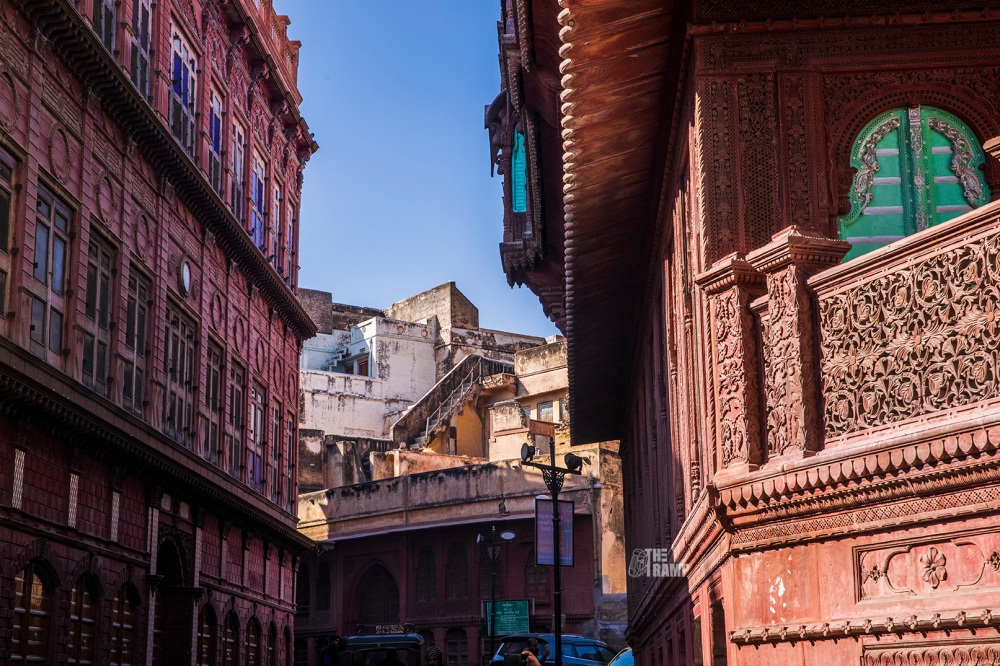
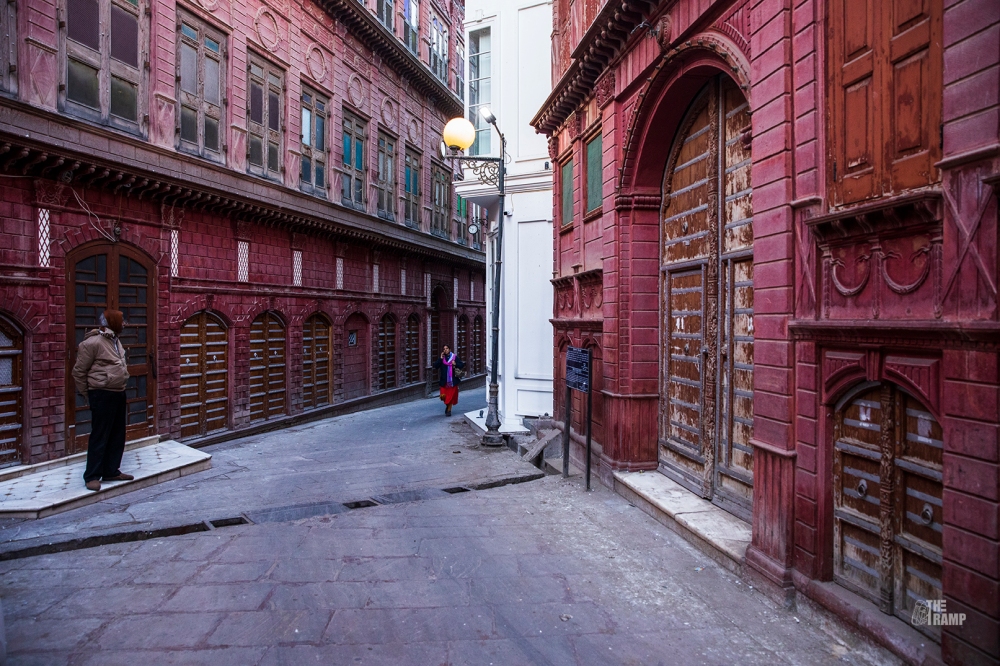
Nowadays, the area is occupied by the couples and photography teams for their pre wedding shoot. When I was taking photographs of the building, suddenly a puerile guy asked me to avail him as his camera ceased working. I had never done such assignments but endeavored my caliber best. He offered his one day remuneration to me but conspicuously I did not take it. Instead, I took his sanction to post one photograph in my blog.
Apart from the Rampuria Haveli, there are many more resplendent facades and temples to explore in this area. It is infelicitous that few buildings are getting reshaped as a modern pattern and engendering a dystopian look. According to a local old man, once there were thousands of havelis in Bikaner but now only four hundred of them still subsist.
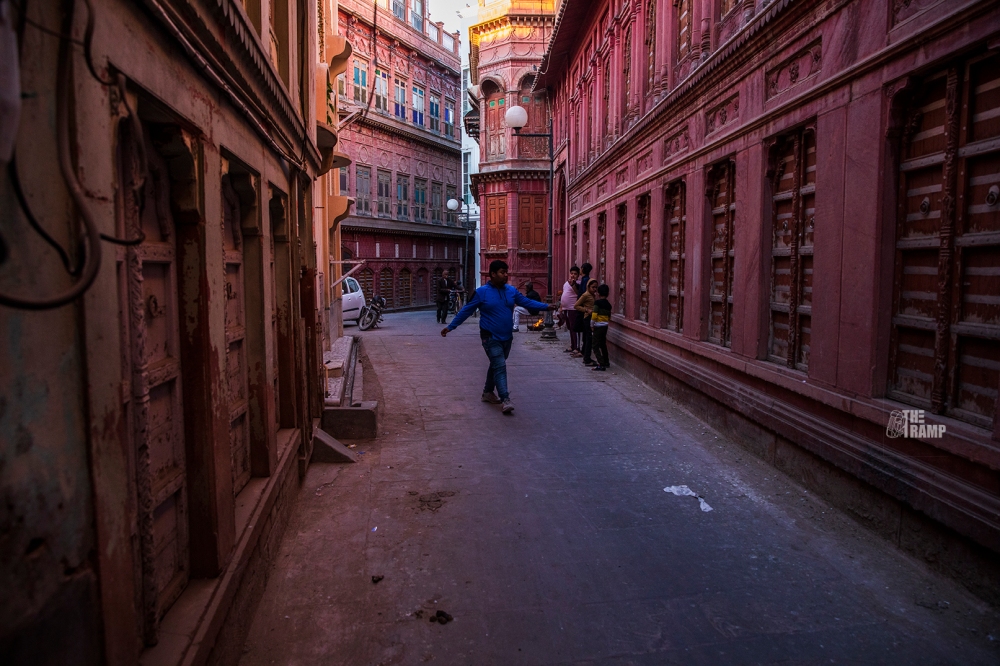
Lalgarh Palace:
By a rapido ride from Rampuria Haveli, I reached Lalgarh Palace. The red sandstone building is among the incipient architectures of Bikaner and founded by Maharaja Ganga Singh of Bikaner.
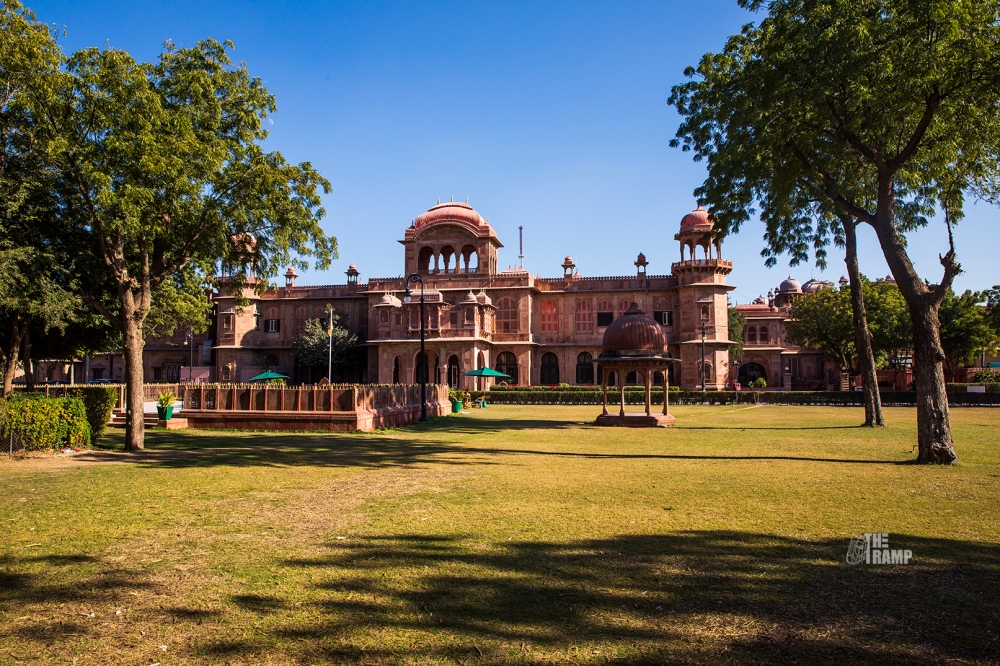
The house is still owned by the King’s descendents. A portion of the house is nowadays transformed to a museum – Sri Sadul Museum.
Ambrosial Raj Kachori and Kesar Fini:
The giant kachori is an invention of Bikaner. Bang antithesis Bikaner Railway Station, Heeralaal’s Restaurant is the best place for Raj Kachori.

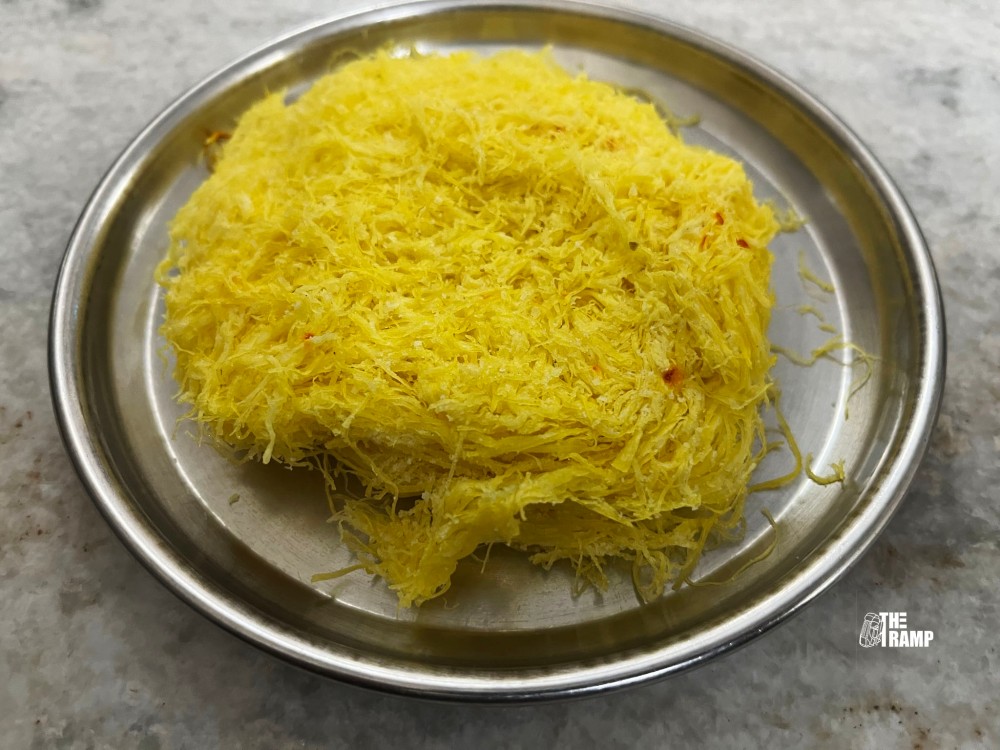
Ganga Government Museum:
The not to miss museum houses an eclectic collection of Rajasthani folk art and miniature painting.
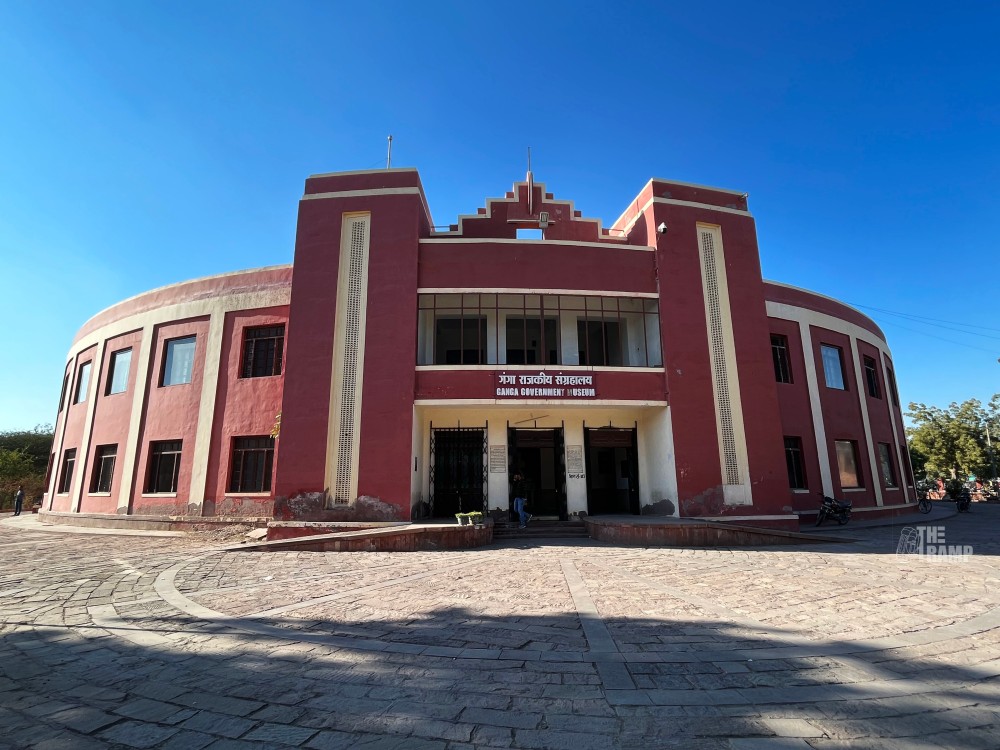
Devikund Sagar:
The royal cenotaph of Bikaner is a must visit place. The three enclosures situated around Kalyansagar tank forfends the Chhatris (Cenotaphs) and a number of less prominent memorials for Princes, Princesses and so on.
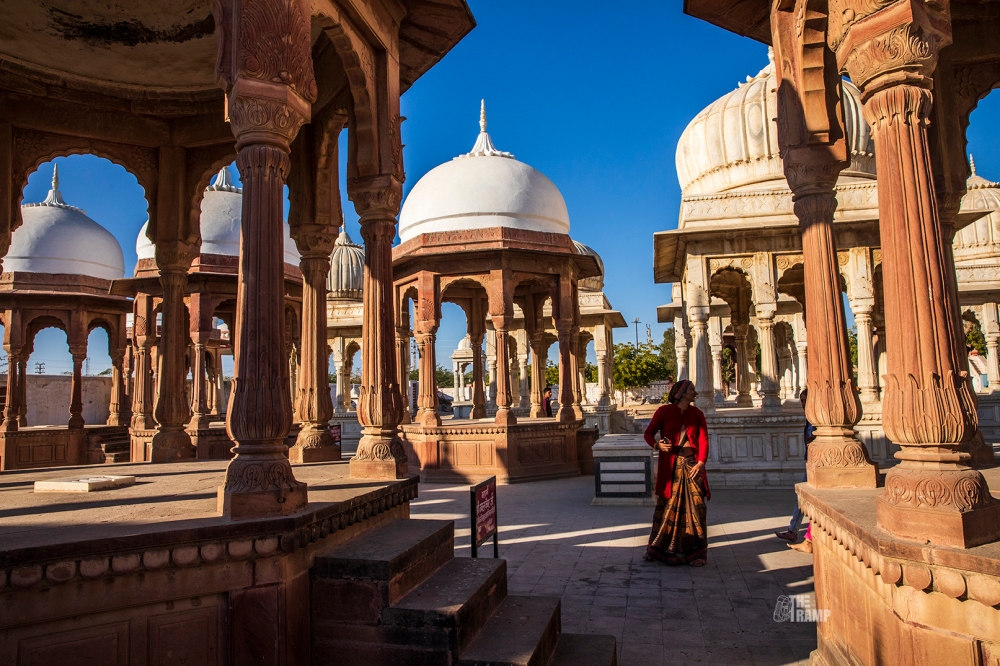
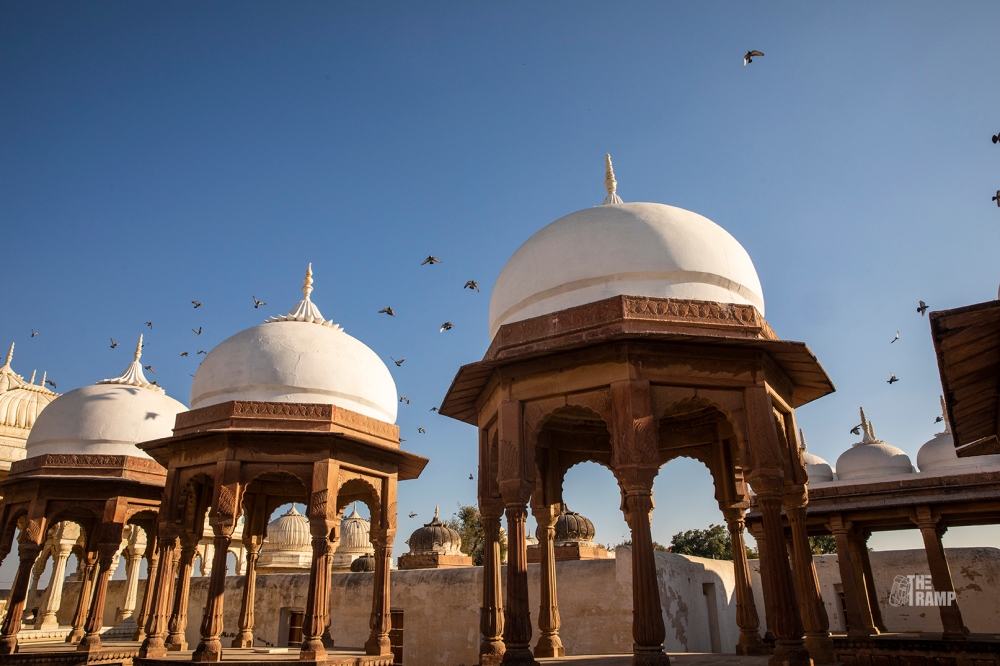


This was my last destination on that day. It was 31st December. I came back to Hotel and relished the evening with liquor and Bikaneri Bhujia. The city houses the famous shop of Bikharam Chandmal. It was quite conspicuous that all the tourists purchase bhujia from this shop.
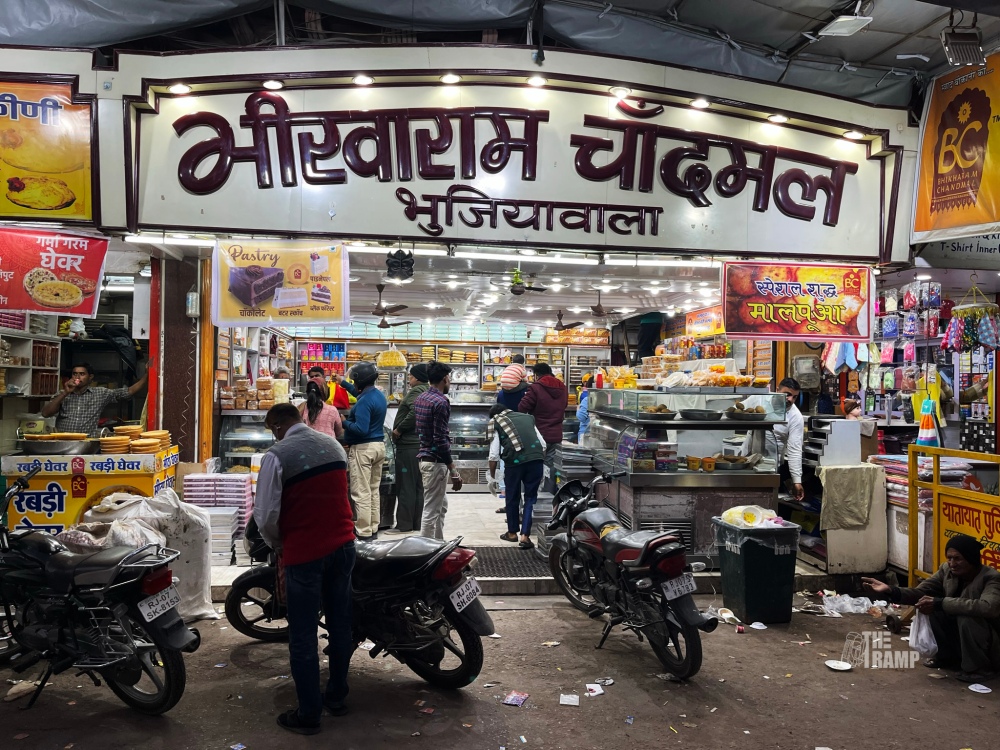
Next morning I booked an auto rickshaw and visited Karni Mata Temple.
Karni Mata Temple:
A temple is dedicated to rats!!!
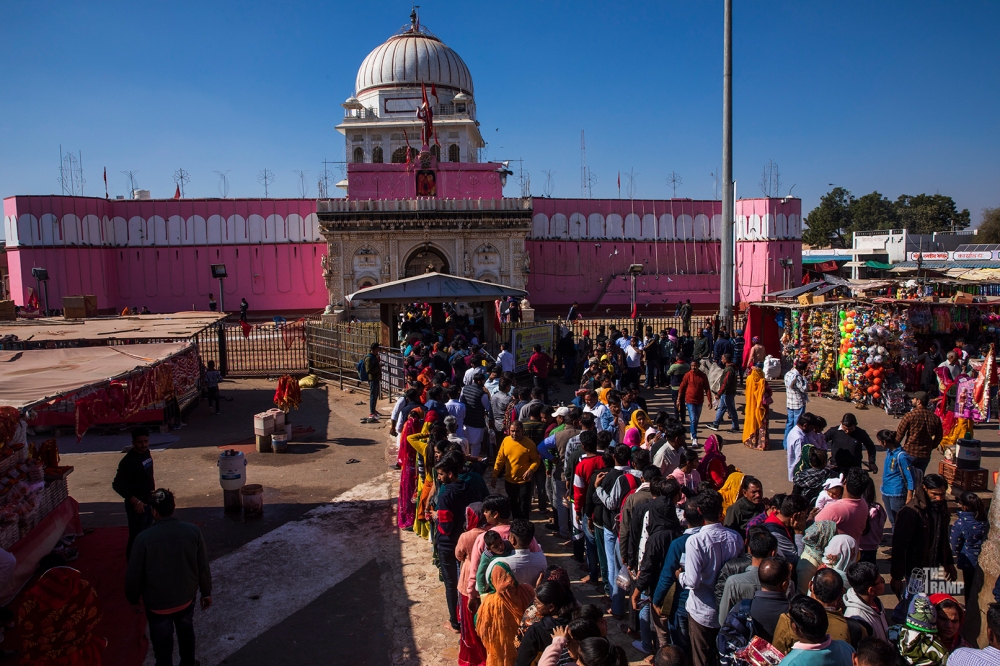
Famous as India’s one of the wierd magnetization, Karni Mata Temple is located at Deshnoke, 30km south of Bikaner. The temple houses millions of holy rodents and the pilgrims victual them milk and biscuits. The rodents at Karni Mata Temple can be visually perceived running around, imbibing milk, orally consuming from the hands of the priest and worshippers.
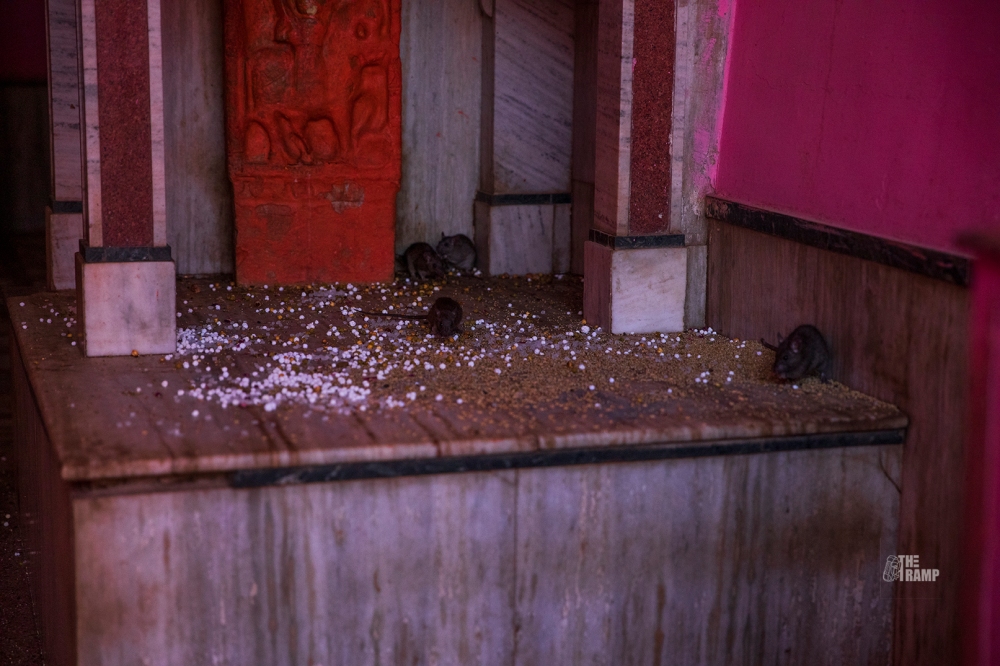
Legends verbally express that when Lakshman, the son of Karni Mata, drowned in a pond while endeavoring to imbibe dihydrogen monoxide from it, the Goddess pleaded to Yamaraja, the Deity of Death, to revive her son. After relucting initially, Yamaraja sanctioned Lakshman and all the other sons of Karni Mata to be reincarnated as rats. So, devotees believe that the rats belong to her reincarnated clan.
National Research Centre on Camel:
Further travelling by the auto rickshaw I reached NRCC – National Research Centre on Camel. This is authentically a camel breeding farm.
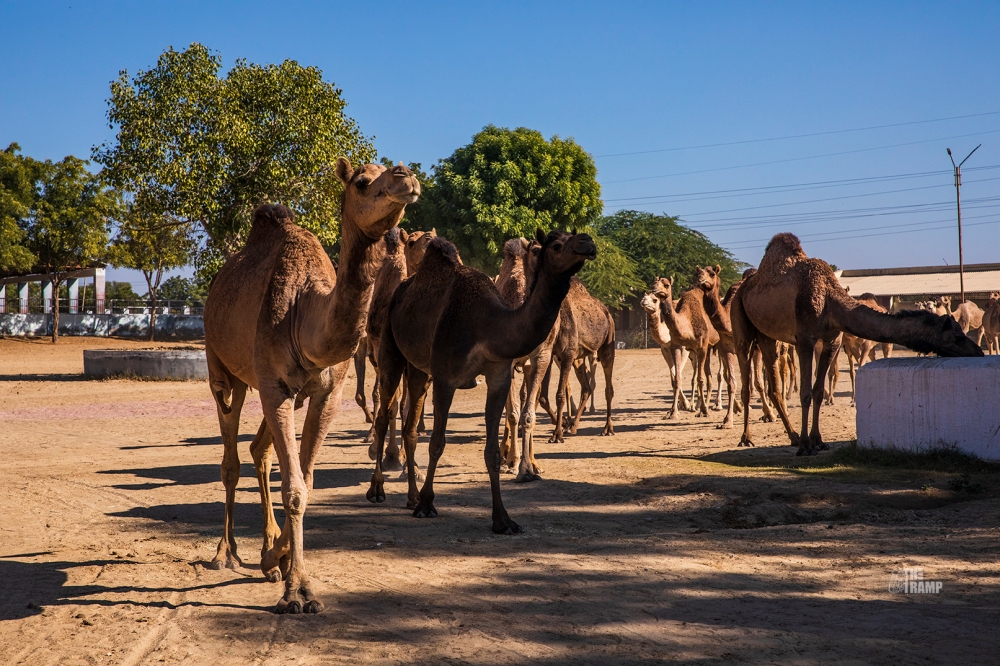
Museums and archives predicated on the research on camels are authentically worthy to optically discern. The involute houses shops to sell winter garments (shawls, stoles, comforters etc.) made by camel wools.
But the most fascinating part of this peregrination was testing kulpi prepared by camel milk.

Dessert villages:
While coming back to Hotel, the auto rickshaw puller, Aziz Bhai took me to a diminutive desert village.
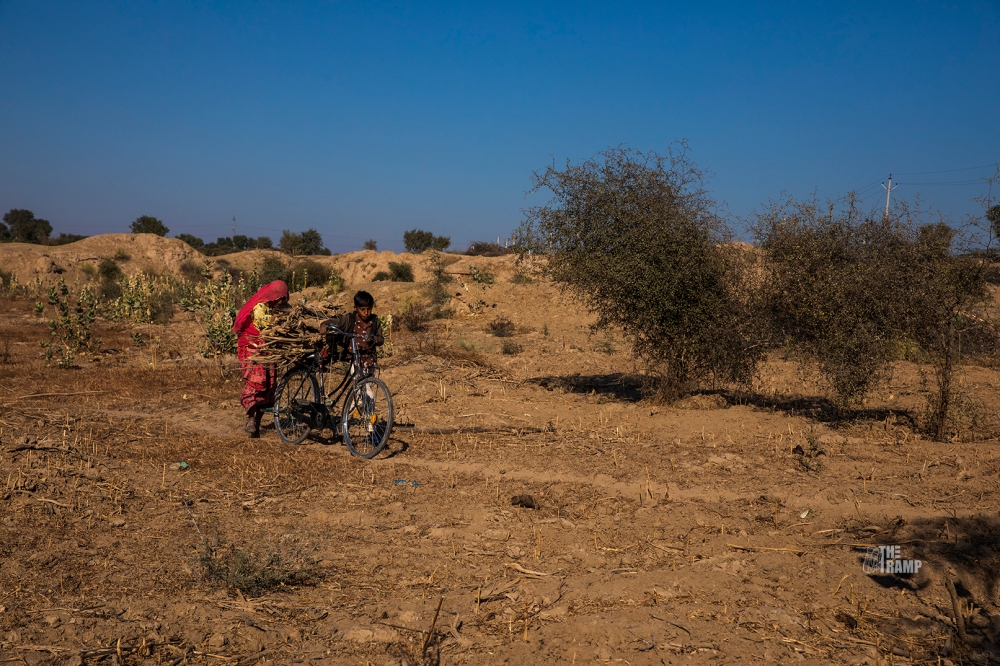

My train was on that night. I reached the station. When the train chugged, the sound seemed to be the final whistle of a memorable trip to Rajasthan.
